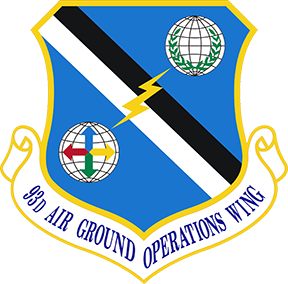 93d AIR GROUND OPERATIONS WING
93d AIR GROUND OPERATIONS WING
The 93d Air Ground Operations Wing activated in 2008 and became the first wing to provide highly-trained ground combat forces capable of integrating air and space power into the ground scheme of fire and maneuver. The wing members conduct offensive and defensive ground combat operations worldwide to protect expeditionary aerospace forces with an airborne capability. At a moment's notice, they provide worldwide deployable, "first-in," fully integrated, multi-disciplined capabilities and provide the joint force commander airborne, air-mobile, air-land, and over-land insertion capability, and remain the joint expert on integration of air power and combat weather support to ground forces. They provide Joint Force Commanders with expertise on the integration of air power and extend the Theater Air Control System for the Joint Forces Air Component Commander. The 93d AGOW also provides highly trained forces capable of employing air power activities in close coordination with land operations, including combat weather support to land forces. All to rapidly deploy and conduct offensive and defensive ground combat operations worldwide to protect expeditionary forces anywhere, anytime. The 93d AGOW is comprised of three operational groups, 16 squadrons, 10 detachments, 9 operating locations at 20 locations with 18 host air force bases owned by 7 Major Commands.